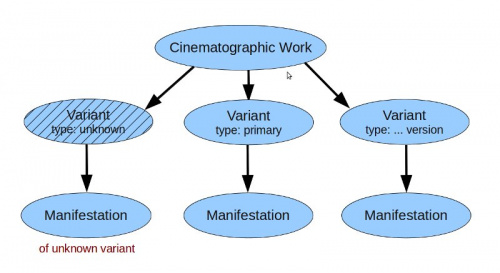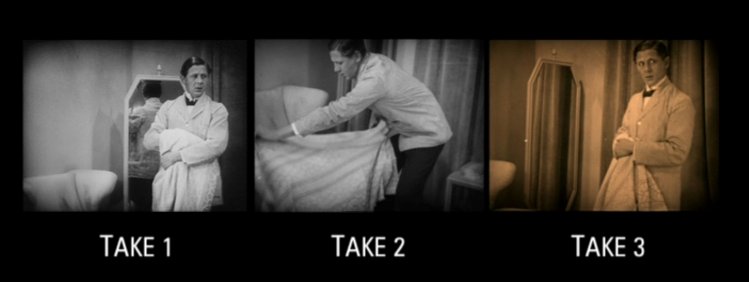Making sense of the Variant
From filmstandards.org
En 15907 provides a very general definition for the optional Variant entity. While the decision about when and how to use this decription level falls into the domain of cataloguing, some semantic clarification will also be needed at the level of metadata modelling.
Here are some cases that may require more guidance than what is given by the current definition of Variant:
Case 1: A Manifestation not belonging to a known Variant
If little or no information is available about the content of a manifestation, then it may be impossible to decide if it belongs to a known variant.
Working from the assumption that if the Variant entity is used, then is should be applied unequivocally throughout a filmographic database, we may arrive at the following solution:
Considering the fact that the Variant entity is defined as an optional description level, me may instead prefer the following construct:
Case 2: Several Variants from a single production event
Several film works are known where takes were repeated in order to produce more than one master negative without intermediate duplication. One such example is Spione by Fritz Lang (1928).
Shortly after the introduction of sound film, it was not uncommon to produce multilingual versions where shots were repeated with different sets of main actors. An example of such a multilingual version is Cape Forlorn / Menschen im Käfig / Le cap perdue by E.A. Dupont (1930).

